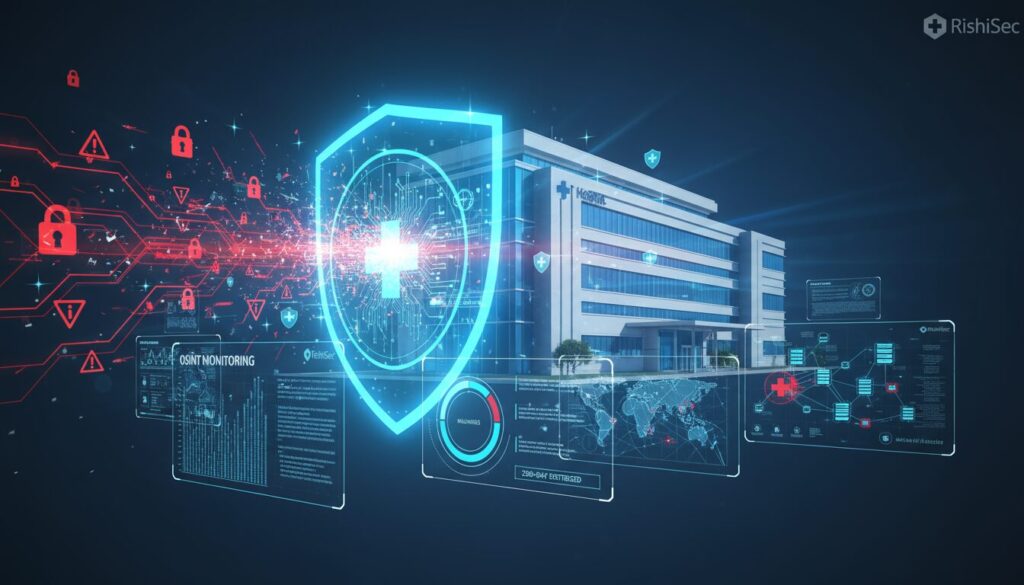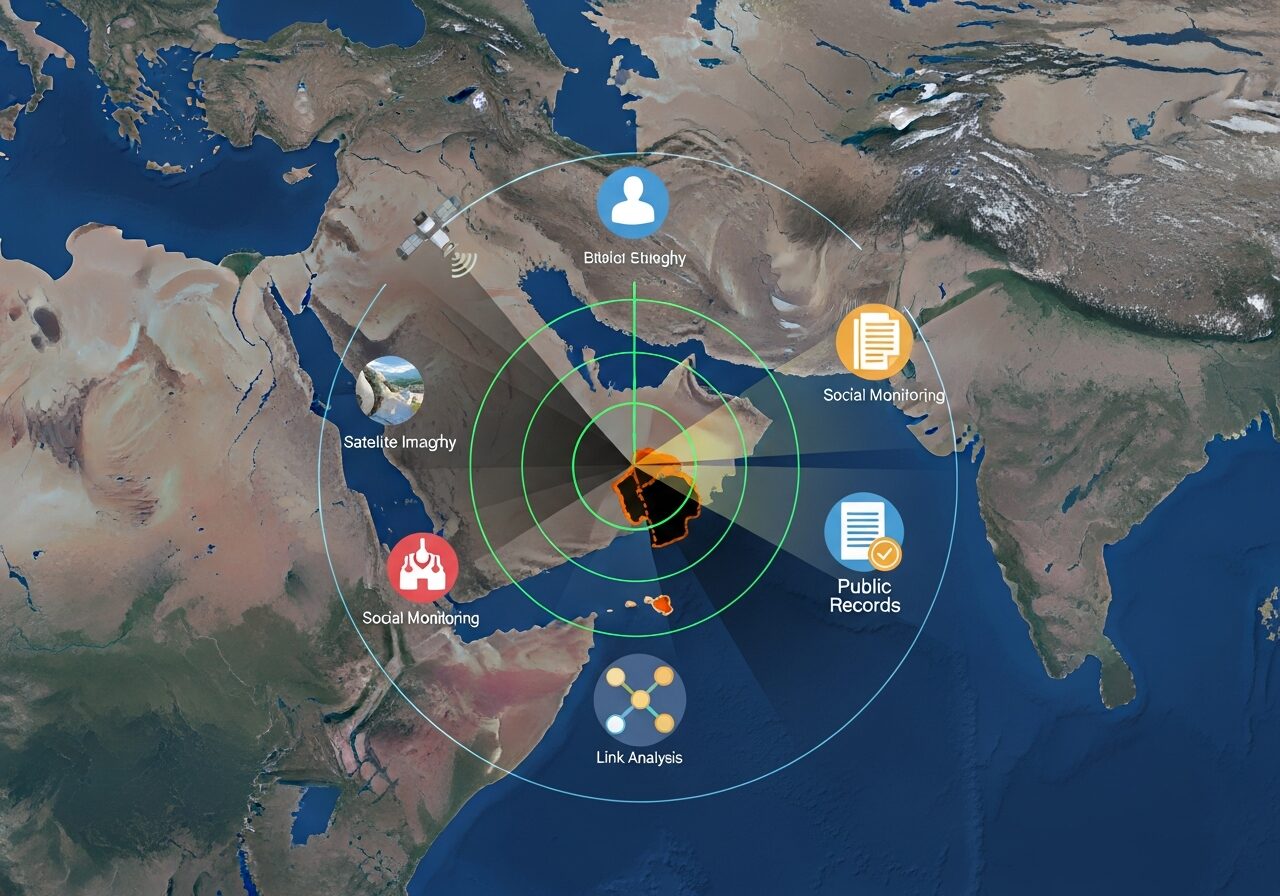Let me tell you something I’ve learned from 20+ years in offensive security: if you want to find the softest targets with the highest payouts, look at healthcare. And ransomware gangs? They figured this out years ago.
In 2025, we’re witnessing an unprecedented surge in ransomware attacks targeting hospitals and healthcare systems. Russian-speaking cybercriminal groups are launching sophisticated cross-border campaigns that don’t just encrypt data—they’re stealing patient records, threatening to leak sensitive medical information, and demanding ransoms that would make your CFO’s head spin.
Here’s the brutal reality: when a hospital gets hit with ransomware, it’s not just about money. It’s about life and death. Surgical procedures get delayed. Emergency rooms divert patients. Critical medical devices go offline. And patient data—which unlike credit cards, can’t simply be “changed”—becomes permanent leverage for extortionists.
But here’s where it gets interesting: Open Source Intelligence (OSINT) is becoming the secret weapon that forward-thinking healthcare CISOs are using to turn the tables on these attackers.
Why Traditional Security Fails Against Healthcare Ransomware
Before we dive into OSINT solutions, let’s talk about why hospitals are getting absolutely demolished by ransomware attacks.
The Perfect Storm of Vulnerabilities
Healthcare organizations face a unique cybersecurity nightmare:
- Legacy systems running critical functions that can’t be easily updated or replaced
- Connected medical devices (IoT) with minimal security controls
- Third-party vendor dependencies creating massive attack surfaces
- Overworked IT teams managing thousands of endpoints with limited budgets
- Staff training gaps where one phishing email can compromise an entire network
Traditional reactive security—firewalls, antivirus, and hoping for the best—simply doesn’t cut it anymore. You need proactive threat intelligence that tells you what’s coming before the ransomware payload executes.

How OSINT Transforms Healthcare Cyber Defense
This is where OSINT becomes your force multiplier. Instead of waiting for attacks to hit your perimeter, you’re actively hunting threat actors, understanding their tactics, and building defenses based on real-world intelligence.
1. Early Warning System: Tracking Threat Actor Chatter
Here’s something most healthcare security teams don’t realize: ransomware gangs talk about their targets before they strike. They discuss vulnerabilities, share reconnaissance data, and even advertise stolen credentials on dark web forums.
With proper OSINT monitoring, you can:
- Track ransomware-as-a-service (RaaS) forums where affiliates discuss healthcare targets
- Monitor paste sites and data leak platforms for mentions of your organization
- Identify compromised credentials from your domain before they’re weaponized
- Detect reconnaissance activity against your public-facing infrastructure
Tools like Kindi automate intelligence gathering, continuously monitoring thousands of sources to alert you when your organization is mentioned in threat actor discussions.
2. Threat Actor Profiling: Know Your Enemy
Not all ransomware gangs are created equal. Some specialize in healthcare. Others avoid it due to ethical concerns (yes, even criminals have lines they won’t cross). Understanding who’s targeting healthcare and their specific tactics is crucial.
OSINT enables you to:
- Build comprehensive threat actor profiles, including their preferred attack vectors
- Track ransomware gang evolution as groups rebrand or splinter
- Identify infrastructure patterns like command-and-control servers and phishing domains
- Understand negotiation tactics if the worst happens and you need to respond to an incident
This intelligence directly informs your defensive strategy. If you know LockBit affiliates are actively targeting hospitals in your region using specific phishing templates, you can train staff and implement targeted controls before they strike.
3. Supply Chain Intelligence: Your Vendors Are Your Weakest Link
Remember the Change Healthcare ransomware attack that disrupted prescription processing nationwide? That’s the power of supply chain compromise. Healthcare organizations depend on dozens of third-party vendors, and each one is a potential entry point.
OSINT helps you:
- Monitor vendor security posture through public breach databases and security ratings
- Track vendor-related threats in cybercriminal forums
- Identify compromised vendor credentials before they’re used against you
- Assess vendor risk based on real-world threat intelligence
For more on corporate risk detection using OSINT, check out our guide on OSINT corporate risk detection.

Practical OSINT Strategies for Hospital Security Teams
Let’s get tactical. Here’s how to implement OSINT-driven defense in your healthcare organization:
Strategy 1: Continuous Dark Web Monitoring
Set up automated monitoring for:
- Your organization’s name and domain
- Executive names and email addresses
- Patient portal URLs and healthcare applications
- Medical device model numbers and vulnerabilities
- Stolen credential databases
Pro tip: Don’t just monitor—act on the intelligence. If you find compromised credentials, force password resets immediately. If you discover vulnerability discussions about your medical devices, prioritize patching or network segmentation.
Strategy 2: Threat Intelligence Integration
Your OSINT findings should feed directly into your security operations:
- Enrich SIEM alerts with threat actor context
- Update firewall rules based on identified malicious infrastructure
- Customize phishing simulations using real-world templates targeting healthcare
- Brief incident response teams on current ransomware tactics
Learn more about integrating OSINT to prioritize alerts in SOC environments.
Strategy 3: Proactive Reconnaissance Defense
Ransomware attacks don’t happen overnight. Threat actors spend weeks or months conducting reconnaissance. OSINT helps you detect this early-stage activity:
- Monitor for unusual DNS queries against your domain
- Track social media reconnaissance of your staff and facilities
- Identify exposed assets through Shodan and similar search engines
- Detect credential stuffing attempts using leaked password databases
Strategy 4: Incident Response Preparation
When (not if) a ransomware incident occurs, OSINT accelerates your response:
- Identify the ransomware variant through hash analysis and behavioral indicators
- Locate decryption tools if available from security researchers
- Research the threat actor’s history to inform negotiation decisions
- Track data leak timelines if stolen data is threatened for publication
For law enforcement collaboration, our article on how law enforcement can leverage OSINT to track criminal networks provides valuable insights.

Real-World Impact: OSINT Success Stories in Healthcare
Let me share a scenario I’ve seen play out multiple times:
A regional hospital system implemented continuous OSINT monitoring through Kindi. Three weeks later, the platform detected their domain credentials being sold on a Russian-language forum. The security team immediately:
- Identified the compromised accounts (two physicians and one administrator)
- Forced password resets and implemented MFA
- Reviewed access logs for suspicious activity
- Briefed the incident response team
Two days later, they detected failed login attempts using those exact credentials from IP addresses in Eastern Europe. The attack was stopped before it started.
That’s the power of proactive OSINT-driven defense.
Building Your Healthcare OSINT Program
Ready to implement OSINT in your healthcare organization? Here’s your roadmap:
Phase 1: Foundation (Weeks 1-4)
- Inventory your digital assets and attack surface
- Identify critical third-party vendors
- Establish baseline monitoring for your organization’s digital footprint
- Select OSINT tools and platforms (consider Kindi for automated healthcare-focused intelligence)
Phase 2: Intelligence Operations (Weeks 5-12)
- Deploy continuous monitoring across dark web, paste sites, and threat actor forums
- Integrate OSINT feeds into your SIEM and security stack
- Train security analysts on OSINT techniques and tools
- Establish incident response playbooks incorporating OSINT intelligence
Phase 3: Maturity (Ongoing)
- Develop threat actor profiles specific to healthcare
- Build predictive models based on historical attack patterns
- Share intelligence with healthcare ISACs and peer organizations
- Continuously refine monitoring based on emerging threats
For more on automating OSINT investigations, read our guide on automating OSINT investigations.
The Future of Healthcare Cybersecurity: Intelligence-Driven Defense
Here’s my prediction: within two years, OSINT-driven threat intelligence will be mandatory for healthcare organizations under updated HIPAA regulations and cyber insurance requirements. The organizations that build these capabilities now will have a massive competitive advantage.
Ransomware gangs are getting more sophisticated, their attacks more devastating, and their targets more critical. But with proper OSINT implementation, healthcare organizations can shift from reactive victims to proactive defenders.
The question isn’t whether you’ll face a ransomware attack—it’s whether you’ll see it coming in time to stop it.
Take Action: Protect Your Healthcare Organization Today
Don’t wait for a ransomware attack to force your hand. Start building your OSINT-driven defense program today:
- Assess your current threat intelligence capabilities
- Implement continuous monitoring of your digital footprint
- Train your security team on OSINT techniques
- Integrate intelligence into your security operations
- Test your incident response with ransomware scenarios
Want to see how OSINT can transform your healthcare security program? Explore Kindi and discover how automated threat intelligence can protect your patients, your data, and your reputation.
Remember: in cybersecurity, the best defense is knowing what’s coming before it arrives. That’s the power of OSINT.



